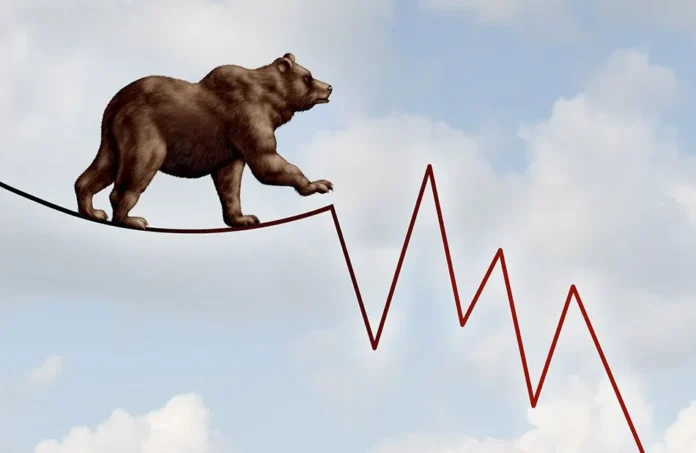Staff Reporter
When you hear stories of individuals striking it rich in the stock market, it’s easy to assume their journey was smooth sailing. Invest in stocks, sit back, and watch your wealth grow—while that can happen, it’s crucial to recognize that the stock market is anything but linear. It moves in a zig-zag pattern, marked by both significant dips and surges.
Market volatility, including bear markets, is an unavoidable part of long-term investing in stocks. And for most people, a long-term approach is essential to building substantial wealth. Here’s an overview of how long bear markets have historically lasted and other key details.
What’s a Bear Market?
Let’s clarify the terminology. A market drop of about 10% to 20% is called a correction. When it falls by 20% or more, it’s classified as a stock market crash.
Bear markets come into play when the market declines for roughly two months or more, with a drop of at least 20%. Conversely, prolonged periods of rising stock prices are known as bull markets.
Bear markets can arise from various factors, often linked to decreased consumer confidence. Recent years have seen declines due to events like the bursting of a bull market bubble, recessions, the COVID-19 pandemic, and the subprime mortgage crisis.
Global economic instability, including recent tariff conflicts, can also trigger a bear market. A recent Reuters report highlighted that while U.S. consumer confidence improved in May after a five-month decline, concerns over tariffs persist. However, we are not currently in a bear market.
How Long Do Bear Markets Last?
Understanding the duration of bear markets is important for investors. While there’s no set timeframe, history shows a mix of long and short bear markets. Here are some key points:
- On average, bear markets since 1928 have lasted about 11.4 months, according to Yardeni Research.
- Historically, the market has lost approximately 35% during bear markets, while bull markets have yielded average gains of 111%.
- A bear market concludes with a sustained upswing, and it typically takes around 2.5 years for the market to fully recover to its previous peak.
- Notably, the shortest bear market occurred in 2020, during the pandemic, when the S&P 500 fell over 30% in just 33 trading days, rebounding within four months.
- One of the longest bear markets for the S&P 500 began in March 2000, following the “internet bubble” burst, which saw a 49% drop and took about 31 months to recover.
- Since the 1800s, the average recovery time from a bear market has been about 4.5 years, with a median recovery duration of 2.4 years.
- Bear markets, on average, occur roughly every 3.5 years.
How Should You Navigate Bear Markets?
Given that market downturns can happen unexpectedly, it’s wise to invest only money you won’t need for at least five to ten years. This way, you avoid the pressure of selling during a downturn.
Before deciding to sell after a crash, consider this: money is made by buying low and selling high. Selling during a market drop may not be the best strategy.
Hartford Funds notes that about 42% of the S&P 500’s strongest days in the past 20 years occurred during bear markets, and another 36% took place in the early stages of a bull market, before it was clear a recovery had begun. Staying invested can often be the best way to weather a downturn since timing the market’s recovery is challenging.
Also, bear markets can present significant opportunities, allowing you to acquire great stocks at temporarily reduced prices. They can be ideal moments to bolster your long-term stock portfolio.

